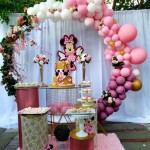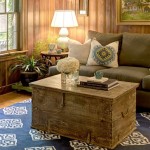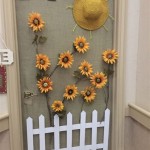What Is The Best Color To Decorate A Living Room?
Choosing the right color for a living room can significantly impact the overall atmosphere and aesthetic. There's no single "best" color, as personal preferences and the desired mood play crucial roles. However, understanding the psychological effects of different colors and considering factors like natural light and existing furniture can guide the selection process toward a harmonious and inviting space.
Understanding Color Psychology
Color psychology explores how different hues influence emotions and behaviors. Warm colors like red, orange, and yellow evoke feelings of energy, enthusiasm, and excitement. They can be ideal for stimulating conversation and creating a vibrant social atmosphere. Conversely, cool colors such as blue, green, and purple promote tranquility, relaxation, and focus. They are well-suited for spaces intended for relaxation and quiet contemplation.
Considering Natural Light
The amount of natural light a living room receives significantly impacts how colors appear. Rooms bathed in ample sunlight can handle bolder, more saturated colors without feeling overwhelming. Darker shades might appear richer and deeper in well-lit spaces. In contrast, rooms with limited natural light benefit from lighter, brighter colors that help maximize the available light and prevent the space from feeling too closed in. Light neutrals, pastels, and soft shades can create an airy and open feel in dimly lit rooms.
Harmonizing with Existing Furniture and Decor
Existing furniture and decor should inform color choices. The wall color should complement the upholstery, rugs, artwork, and other elements within the space. Consider the undertones of existing pieces and choose a wall color that either blends harmoniously or provides a pleasing contrast. For example, a neutral gray wall can provide a versatile backdrop for colorful furniture and artwork, while a deep blue wall can create a sophisticated contrast with light-colored furniture.
Creating a Focal Point
Color can be strategically used to create a focal point within the living room. An accent wall painted in a bolder or contrasting color can draw attention to a specific feature, such as a fireplace or a piece of artwork. Alternatively, using color to highlight architectural details like moldings or built-in shelves can add visual interest and depth to the room.
The Versatility of Neutrals
Neutral colors, including white, beige, gray, and taupe, provide a timeless and versatile foundation for any living room. They create a sense of calmness and spaciousness, allowing other design elements to take center stage. Neutrals also offer flexibility for incorporating pops of color through accessories like throw pillows, rugs, and artwork, making it easy to update the look without repainting the entire room.
Embracing Bold Choices
While neutrals offer a safe and classic option, incorporating bolder colors can inject personality and create a unique statement. Deep jewel tones like emerald green, sapphire blue, or ruby red can add a touch of drama and sophistication. Alternatively, vibrant hues like sunny yellow or cheerful orange can create an energetic and uplifting environment. When using bold colors, consider balancing them with neutral elements to prevent the space from feeling overwhelming.
Testing and Sampling
Before committing to a paint color, it's essential to test and sample the shade in the actual living room. Paint a small section of the wall or use large paint swatches to observe how the color appears in different lighting conditions throughout the day. This process allows for a more accurate assessment of the color's true appearance and helps avoid costly mistakes.
Considering the Size and Shape of the Room
The size and shape of the living room should also influence color choices. Lighter colors can make a small room feel larger and more open, while darker colors can create a sense of intimacy and coziness in a larger space. Vertical stripes can visually elongate a room with low ceilings, while horizontal stripes can make a narrow room appear wider.
Exploring Different Finishes
The paint finish also plays a role in the overall effect. A matte finish absorbs light and can create a more relaxed and subdued atmosphere, while a high-gloss finish reflects light and can add a touch of glamour and sophistication. Eggshell and satin finishes offer a balance between the two, providing a subtle sheen and easy cleanability.

30 Living Room Color Ideas Best Paint Decor Colors For Rooms

50 Popular Living Room Colors Paint Ideas

50 Best Living Room Paint Colors Top From Designers

50 Best Living Room Paint Colors Top From Designers

The Best Living Room Paint Colors Of 2025 According To Designers
:strip_icc()/cdn.cliqueinc.com__cache__posts__261477__small-living-room-paint-colors-261477-1529967319237-image.700x0c-4c6e6bd8e8214a9786d2b8045f6dbdf4.jpg?strip=all)
10 Best Paint Colors For Small Living Rooms

15 Stunning Hall Colour Combination Ideas For Living Room

The Best Living Room Paint Colors Of 2025 According To Designers

11 Best Living Room Color Scheme Ideas And Designs For Decor Colors Schemes

30 Living Room Color Ideas Best Paint Decor Colors For Rooms
Related Posts







